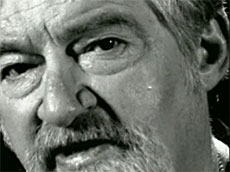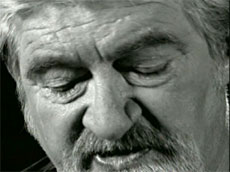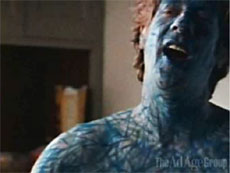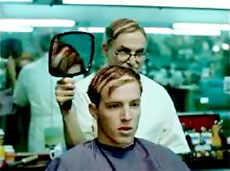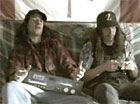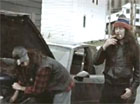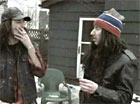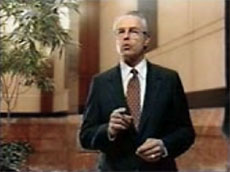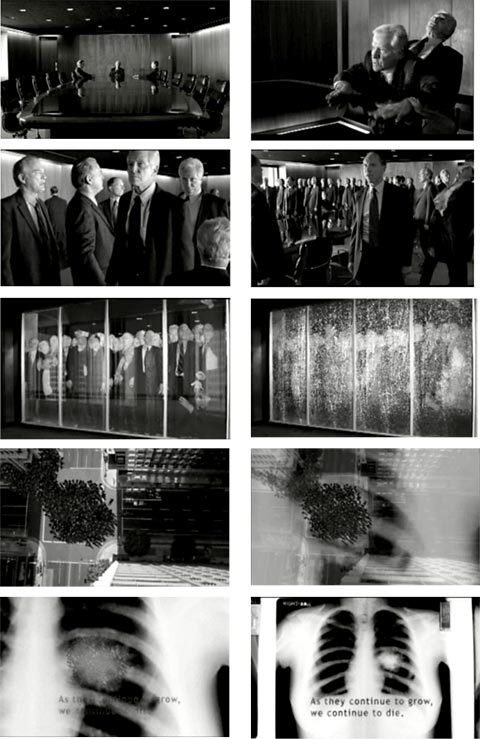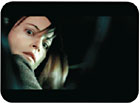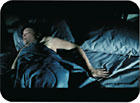Introduction Health authorities and public service foundations regularly commission the making of anti-smoking spots, typically seeking fresh and more effective approaches in collaboration with advertising agencies that in turn bring specific story ideas and storytelling know-how into the equation when new campaigns are designed. The number of anti-tobacco ads currently in circulation - either broadcast or viewable on the Internet, for example in the creative portfolios of advertising agencies' websites, or on ad-compilation websites - is staggering, and anyone wishing to study these ads could easily feel overwhelmed by their sheer number and diversity. Although there is relevant information available on the Web - concerning, for example, the goals and effectiveness of specific smoking prevention and cessation campaigns - my searches have not turned up what I needed most to gain an overview of this important area: namely a viable typology of anti-tobacco ads. Typologies of a more general nature, dividing television ads for example into didactic , narrative and lyric meta-genres, the first of which is sub-divisible into such categories as the testimonial, expert spot, demonstration, promotion and spokesperson,[1] are available and are unquestionably useful in other connections. But as a means for charting the territory of the anti-smoking spot, a thematic typology - focusing on the leveraging issues dramatized by the ads - would be far more meaningful as an overview. The present article is an attempt to provide a typology of that kind, describing ads in relation to four major issues, in which the storytelling dramatizes respectively:
Any given ad can of course dramatize more than one of the above-mentioned leveraging themes, but that doesn't make this thematic grid any less useful as a means for characterizing any given ad. The reader is asked to bear in mind that the present article is an initial attempt to chart the thematic territory of the anti-tobacco TV spot, and in the process, to present a number of exemplary ads - some just in passing, others in greater detail, sometimes with storyboards, transcriptions of all spoken lines, and interviews with key people involved in the making of the ads. Even in these fuller treatments, the reader should expect no systematic analysis of the ads presented in these pages. Several of these ads will however be singled out for analytical study in a forthcoming book devoted to the art of storytelling in the public service announcement. But in the case of "Marker Man" and "Live Longer," I am delighted to be able to include in the present article the informative comments made by those who commissioned or designed the ads. A number of people were extremely helpful in providing copies of ads, permission to use images from them, permission to cite spoken lines, and/or in replying to my questions. I wish to thank Shawn King and Shelly Dwyer at Extreme Group; Aaron Greene and David Neinstein at Spank Films; Nancy Hoddinott at the Office of Health Promotion, Province of Nova Scotia; Jac Coverdale and Kristen Suys at Clarity Coverdale Fury; Caroline Nicolay at The Cleveland Clinic Foundation; Monique Veillette and Adam Svatek at Ground Zero; Kurt M. Fowler at the California Department of Health Services; Terry Reid at the Department of Health, State of Washington; Paul Nelson and Kelly Shrader at Arnold Worldwide; Phillip Graham at the American Legacy Foundation; Nadia Flusche and Laura Burke at Sedgwick Rd; and Lou Ann Flatgard at Maris West & Baker. 1. The harmful effects of smoking
As the images show, the shots are made in extreme close-up, enhancing our sense of nearness to the speaker and striking a note of intimacy, as he confides to us the bitter lesson he has learned. And perhaps the use of black-and-white photography further underscores the documentary or un-staged quality of the spots in this "joinjoe" campaign. [3] Authentic testimonials of this kind, emphasizing the potentially fatal consequences of smoking, do not have to be made by celebrities to be effective. See, for example, four heartbreaking ads concerning women and smoking made by Arnold Worldwide for the American Legacy Foundation, [4] as well as some hard-hitting ads recently made for the National Health Service in the U.K. [5] Other ads demonstrate the harmfulness of smoking by showing its effects on the body, as is the case with an uncompromising Australian campaign launched in 1998 with the tagline: "Every cigarette is doing you damage." In one of these ads, a portion of the aorta that had been removed from the body of a deceased 32-year old smoker, is pressed by rubber-gloved fingers, and a prodigious clump of fatty deposits emerges from one end of the severed blood vessel. This has been aptly described as "perhaps one of the most disturbing images even seen on television." [6] There are also ads that focus on the harm done by tobacco, not to the smokers themselves, but to innocent bystanders who are exposed to the toxins in the smoke and suffer the consequences. See for example an ad called "Emily" in which a little girl apparently addresses her mother, pleading with her to stop smoking because the smoke makes her little chest ache (a title then explains that "Smoking around children can cause asthma"). The final shot reveals that the little girl is speaking to herself in a mirror, either rehearsing what she intends to say, or saying to herself the words she lacks the courage to tell her mother. [7] In another ad in the same campaign, a little boy named "Mark" looks out his window and complains that his new little brother hasn't come home from the hospital. He wonders whether something may be wrong with the newborn brother (a title then explains: "Smoking during pregnancy can cause birth defects). [8] And there are ads that depict the lethal harm done by cigarettes by showing what smokers may miss out on. A powerful ad entitled "Ghost" shows a middle-aged man encouraging his baby grandchild to run to him ("Come to Grandpa"), only to find to his dismay that the baby runs through him, his daughter saying "I wish Gramps could see it," and a title urging: "Be there tomorrow. Stop smoking today." [9] I would like to end this section on a lighter note by describing another ad that brilliantly dramatizes the effects of passive smoking, this time in a parody of the rugged, smoking cowboy seen in numerous Marlboro-man ads. This TV spot is called "A Man and His Horse," and shows a cowboy either lighting up or puffing on a cigarette already in his mouth as he performs a number of chores, such as saddling his horse, herding cattle, chopping wood, mending a fence, leading his horse to water, etc. Ultimately, when he lights up for the last time, striking a match on one of his spurs, a loud thud is suddenly heard, and when he turns to see what has happened, the camera pulls back showing his dead horse sprawled on the ground before him. A title then explains: "Second hand smoke kills." [10]
2. The foolishness of the smoker
One such ad is called "Marker Man," and consists of an interview in which the interviewer is barely heard and remains off-camera so that we can focus our full attention on the strange phenomenon portrayed in the ad. Here are the spoken lines, some of which are heard as Marker Man - bare from the waist up - goes about his daily chores in his apartment:
The following interview with the creative director, Jac Coverdale, cleared up a number of questions I had about the ad. INTERVIEW WITH JAC COVERDALE (January 10, 2005)Did the Minnesota Youth Tobacco Prevention people provide any specific guidelines for the ad, or was its conception entirely your own idea? JC: It was part of a campaign that was moving away from our 3-year strategy of exposing the greed and manipulative tactics tobacco companies use to hook teens intox a lifetime of "brand loyalty". So it was really a new direction we brought to the client to "denormalize" cigarette smoking by portraying smoking as an immature, loser thing to do. Is it an authentic story that "Marker Man" tells or a fiction staged for the spot? JC: It was, in fact, a fictional account used as a metaphor for doing daring things as a teenager that seem fun at the time, but hold long-term consequences (such as starting smoking). There are no cues to indicate that it is a fiction. Did you deliberately design the spot this way? JC: Yes, but teens are so media savvy, they decode it as a slightly cynical and outrageous metaphor. There are a number of other anti-smoking spots that play on comparisons of stupid things, but this one stands out from the others. Can you tell me in your own words what you see as the special qualities of this ad? JC: It's bizarre, but since our audience is very impulsive, there's a certain "it could happen" aspect to it. Here's an adult guy, who has become a loser because of the long-term implications of something he did impulsively as a teenager. (Few teen smokers want to become adult smokers.) But I think the tone is what makes it work. It's not "broad" or loud, and it doesn't cram the message down your throat. It's not overtly judgmental or preachy, it lets teens feel like they draw their own conclusions. Is there anything else you can tell me about the conception or production or effectiveness of the ad? JC: It was part of a series when conceived, along with a woman who goes through life with a javelin stuck halfway through her head, and a guy who is only a head, both caused through impulsive acts that appeared harmless as teens, but which ended up with results (like a smoking addition) that these people were stuck with the rest of their lives. A bit dark, yes. Another noteworthy ad that offers a comparison as a point of leverage for gauging the foolishness of smoking, is called "Barber." In this ad, a barber gives a young man a haircut that leaves him looking like the elderly customers awaiting their turn, as well as like the middle-aged barber himself. Having shaved off the healthy growth of hair on the young man's crown, the barber combs some of the hair from the side of his customer's head over the now bald pate. We then hear in voice-over: "You wouldn't want their haircut. Why would you want their lungs?" after which a title delivers the tagline: "18-year-old smokers have 50-year-old lungs," along with the logo of Questionit.com. In two other ads in the same series, called "Bingo" and "Teeth," the line spoken in voice-over refers to the nightlife and teeth of 50-year-olds. [11]
A related series of 30-second spots, represented by "License" (2000), "Cow Tipping" (2001) and "Gas Station" (2001), shows teenagers doing outrageously stupid things that get them into trouble, after which a voice-over comments "That's one way to screw up your life early. Smoking's another," followed by a title reading "9 out of 10 people killed by tobacco start smoking in high school," and the Questionit.com logo. [12] In addition to these comparison-based ads, another and more recent approach (2004) dramatizes the foolishness of the smoker through dialogues in which two archetypal losers take turns in justifying their smoking habit with off-the-wall, jaw-dropping arguments. The ads in this "Great Reasons to Smoke" series target 19- to 24-year-olds, and the overall task was "to de-normalize smoking in a target market that feels invincible." [13] The actors chosen to perform in six of these eight spots, Paul J. Spence and Dave Lawrence, enjoy a unique status in Nova Scotia, stemming from their success in playing Deaner and Terry in the mockumentary Fubar[14] (2002), now a cult film in a class of its own. One of the ads in the series, "Live Longer," will now be singled out for an extensive presentation. [15]
First a shot breakdown, with full dialogue, will give the reader a chance to appreciate the kind of reasoning in play when these characters explain the advantages of smoking. Three interviews - with the client, Nancy Hoddinott at the Office of Health Promotion (OHP), Province of Nova Scotia; the creative director, Shawn King at Extreme Group; and the writer, Shelly Dwyer also at Extreme Group - will close this section. INTERVIEW WITH NANCY HODDINOTT (28 JANUARY 2005)Did the Office of Health Promotion give Extreme Group any specific guidelines for this campaign? Was it a surprise for you to find the Terry and Deaner characters in the ads or was that part of the plan from the start? NH: I wouldn't say we gave specific guidelines. What I did share with Extreme was the best info I had in terms of what kinds of messages worked with youth/young adults and my best advice given my limited experience. I would say we had more information about what didn't work, i.e. approaches not to repeat, and avenues of promising practice. Terry and Deaner weren't part of the plan from the start, but through focus groups and testing of concepts Extreme had an image of the kinds of characters they wanted to present - Terry and Dean they felt fit the concepts perfectly. I will admit, when they first presented this idea, it made us somewhat uneasy, however, the development of this campaign has always been a partnership between the OHP and Extreme and my approach has been if the agency could provide a clear rationale for an approach, and one that did not contradict what we knew about the issue, I would support it moving forward. While all of the ads in the series are brilliant, the "Live Longer" one stands out for me as the ultimate one in the series. Do you happen to agree? NH: I personally agree, however, when we met as a team to review the eight GRTS [Great Reasons to Smoke] ads, what suddenly became evident was different people responded to different ads. That was the beauty of the series, better chance of resonating and impacting a broad spectrum of people. I assume you are pleased with the success of this campaign. What do you see as its special qualities? What sets it apart from other anti-smoking campaigns and accounts for its effectiveness? NH: I am pleased. We never imagined when we began this work with Extreme, what we would eventually achieve. It has been fun and I have learned a great deal. An evaluation of the campaign will be completed in a few days - that will be the real measure of success and I am looking forward to its conclusions. I think what this campaign has done is change how, in this province anyway, we communicate health messages. I hope it has elevated the position of social marketing within health promotion strategies, and has paved the way for innovative campaigns in other areas (healthy eating, physical activity, injury prevention). Hopefully, and I think this has occurred, we have enhanced understanding of the breadth of social marketing and helped remove some of the barriers to effective campaigns. INTERVIEW WITH SHAWN KING (13 January 2005)Did the Office of Health Promotion give Extreme Group any specific guidelines for this campaign? And was it their idea to use the Terry and Dean characters or was it yours? SK: Yes we had some pretty specific guidelines. Our challenge was to "de-normalize" smoking among a youth market. So first we had to get them to listen and then we had to get them to hear the message. Very different things. We knew from research that we shouldn't preach (they wouldn't listen) and that the continued "smoking is bad for you" message no longer resonates with that target. So we had to find a new way to reach them. Our idea was "Great Reasons To Smoke". As far as Terry and Dean were concerned; Shelly and I had used them on numerous occasions as character references for the directors. The director we chose (Sammy Ray Welch) suggested we simply ask them if they would do it. They loved the idea and jumped on board. We then sold the idea of using them to our client. Where does Live Longer fit chronologically in the series? Was it by any chance the very first ad made in the series? While all of the ads in the series are brilliant, this one stands out for me as the ultimate one in the series. Do you happen to agree? SK: A series of eight ads in total ran in this campaign. They ran in two flights of four. The ad Live Longer ran in the second flight of the series. We wanted to be careful about how sensitive people would be to the "Great Reasons To Smoke" message and make sure the audience understood we were telling people not to smoke. We felt that a message about living longer might be best aired after the audience understood the context of the campaign. Live Longer and Better Manners are two of my favourites. They are such insane justifications for why people smoke and to me, really make the point clear. Did Paul Spence and Dave Lawrence participate at all in the development of these spots? Was there any improvisation during the shoot? SK: What Paul and Dave do such a great job at is improvising. With these ads, we gave the guys a script only to discover very quickly, the way to get the best performance was to allow them room to work. We made sure they hit certain "hot buttons" in the script, but allowed them to get there however they wanted. We got some terrific footage that way. Some we used and some we couldn't, but it was a great way to get the guys into character and get the best out of them. The images are given a somewhat distinctive look - rather pale, low-contrast, with a slightly greenish tint. What considerations went into choosing that look for the ads? SK: As I mentioned before, the object of the campaign was to "de-normalize" smoking amongst a youth market. In other words we had to make smoking "un-cool". Unlike Hollywood features that portray smoking characters as cool, or the Marlboro man which was all about male "machismo", these spots needed to feel unhealthy. There was a risk that the kids would think the spots were funny and cool, so we made sure we had footage of them coughing, looking disgusted and basically unhealthy. We've dubbed these spots the "anti-Marlboro" man spots and the look was part of that. What do you see as the special qualities of the campaign? What sets it apart from other anti-smoking campaigns? SK: As far as I know this is a completely new approach to the anti-smoking message. We did research to find out how and why people justify their reasons to smoke. You can imagine some pretty incredible excuses and stories came out of those sessions. Some of the ads were a direct result of that. This was about holding up a mirror and demonstrating to the audience how ridiculous those reasons are. The execution has been able to tap into pop culture. We've heard stories of students dressing up as the characters for Halloween, and doing skits of the commercials at their school. That means they're listening - and to me that's a pretty special quality. It doesn't preach and it isn't all about the "health-risk" message. But it's all there, in a way that is interesting and relevant to the target. Is there anything else you would like to tell me about the conception or meanings or making of these spots? SK: Well I think it took a lot of courage for a client to understand the merits behind this idea and buy into it the way they did. There were a lot of questions and doubts along the way, but we had such a great working relationship that allowed it to get done. You can't underestimate the importance of that to allow great work to get done. INTERVIEW WITH SHELLY DWYER (13 January 2005)Did the Office of Health Promotion give Extreme Group any specific guidelines for this campaign? And was it their idea to use the Terry and Deaner characters or was it yours? SD: The guidelines were to try and find a new way to get youth to pay attention to anti-smoking messages, considering the research showed that they tune out anything that sounds like preaching and that they are de-sensitized to scare-tactics, things like graphic photos of rotting lungs, etc. Research also showed that one thing that did seem to make them pay attention and actually upset them was their relatively new stigma as social pariahs, or the "unattractive" "undesirable" element of society. I remember in one focus group, a girl quietly whispered to a guy beside her: "I wish they wouldn't make us look dumb". Well, smoking is dumb and we picked up on this fear of being forced to look in the mirror. The idea to use Terry and Deaner, the actual "characters" came from the director. However, during the concept and script development, they were always our sort of reference for the "undesirable" or "anti-Marlboro man" characters we had in mind. When the director actually suggested them, we knew we had found the right person to shoot the spots. Where does Live Longer fit chronologically in the series? Was it by any chance the very first ad made in the series? While all of the ads in the series are brilliant, this one stands out for me as the ultimate one in the series. Do you happen to agree? SD: Live Longer was not one of the original "scripts" but was one of the original "reasons" we developed. There was a radio campaign developed for this concept that talked about "fresh air" and "making life easier" and there were gems we gleaned from the focus groups about how: "if you smoke you work less 'cause you're always out for smoke breaks" etc., but there was no actual script for the Live Longer spot. It was just a series of elements that, luckily, the talent brought together and built on. It is definitely the boldest "reason" and the one that perhaps hits home the hardest the ridiculous degree of denial that smokers shield themselves with. It was the one that we worried most about in terms of controversial language. Did Paul Spence and Dave Lawrence participate at all in the development of these spots? Was there any improvisation during the shoot? SD: Paul and Dave didn't participate in the development of the concept or the scripts, until the day of the shoot, which answers your second question. These guys had everyone's jaws dropping at their ability to improvise but not just for pointless fun, but because they truly understood what we were trying to do and added only the language and moments that strengthened the message. There was a lot of improvisation. And we have no problem whatsoever acknowledging that these were great spots, made brilliant by what the actors brought to it in terms of their remarkable ability to improvise. The images are given a somewhat distinctive look - rather pale, low-contrast, with a slightly greenish tint. What considerations went into choosing that look for the ads? SD: Again, the point was to strip away any hint of "glam" or "cool" that the tobacco industry had layered onto to smoking for decades. So, the look was as important as the message and the talent. We wanted the look to almost make you "smell" the smoke if you walked into their house. We wanted it to look like the smell is in the carpet, the curtains, everywhere. Again, the off-putting smell of smoking is another thing that smokers don't like to admit, but know it's something others find offensive. So yeah, we were going for a look that suggested smelly as well as a generally unhealthy environment. What do you see as the special qualities of the campaign? What sets it apart from other anti-smoking campaigns? SD: Well, simply that we came out and suggested that there are "Great Reasons to Smoke." That's a pretty startling message at a time that is seeing the strongest anti-smoking legislation being passed around the world. A time when tobacco companies are facing and losing class-action lawsuits. A time when there is no one on the planet who doesn't know that smoking is bad for you. To hear or see a message that challenges that and actually suggests smoking helps you Live Longer, well, if that doesn't make you stand up and take notice, nothing will.
3. The cynicism of the tobacco industry One is entitled "Industry Recall," and is remarkable both for its elegance and its simplicity (it consists of a single, unbroken shot, with no camera movement whatsoever). A man who looks and acts the part of an executive, appears on screen and is identified by a text superimposed at the lower left-hand corner as "Robert Fitzgerald, Tobacco Industry Chairman, April 1, 2001."
This is what he says, in a sincere and utterly convincing manner, which needless to say leaves the viewer in a state of growing perplexity as the monologue continues: Hello. With the mounting evidence linking cigarettes to cancer, addiction, emphysema, heart disease, and premature death, I want you - the American public - to hear directly from me what the tobacco industry is doing to take responsibility for this very serious problem. Effective immediately, we are issuing a cigarette recall. Every single cigarette in America is being pulled off the shelf and will remain off until we can with a clear conscience offer the American people a cigarette that poses absolutely no heath risk. Because if there are two things the tobacco industry cares about, it is your health and your trust. Thank you. The image is then cut to black, and our puzzlement is suddenly dispelled by the words "april fools" now appearing on screen and whispered in a woman's voice-over, followed by a title bearing the "truth" logo and web address and the words "sponsored by truth." We may now remember the date that had appeared along with the name and title of the speaker at the start of the ad. This idealized image of the tobacco executive, as a caring and refined gentleman for whom the health of the public is the overriding concern, inevitably calls to mind its polar opposite: the image of "loathsome persons motivated by cynicism, greed and malevolence," to quote a complaint filed in a California court by tobacco firms objecting to the picture painted of them in anti-smoking ads. [16] In evoking an idealized picture by having an actor speak with such genuine decency the words no one will ever hear a tobacco executive pronounce, the "april fools" ad snaps into focus the mind-set and values driving the tobacco industry. The other outstanding ad to be presented in this section, makes its case against smoking by likening tobacco executives to cancer cells. This ad is called "Growth" - the title referring both to uncontrollable industrial expansion, greedy for new markets, and to a tumor in the lung. [17]
At the start of the ad, three executives are seated at the far end of a table in a large boardroom. The chairman says to his two colleagues: "Despite these obstacles, we've had a strong year… with tobacco revenues surpassing expectations." A new clone of himself suddenly bursts forth from his chest, and his colleagues also begin to produce clones, a multitude soon filling the boardroom as snatches of their conversation about expansion and markets can be heard. Soon there is no longer sufficient space for them in the boardroom, the windows of which eventually shatter from the pressure. The hundreds of clones gather down on the sidewalk outside the building, pressing forward in a concentrated mass that finally morphs into a tumor on a chest x-ray, over which is superimposed the title: "As they continue to grow, we continue to die." A follow-up title then appears over the x-ray, reading: "undo tobacco now."
The process of quitting Some characterize the rejected cigarette as a threatening and intrusive presence, imposing itself on the quitting smoker like a jilted-lover-turned-stalker. This is the case with a brand new ad called "Suspense," made in the spirit of a Hitchcock thriller, and as the following storyboard clearly shows, the heroine ultimately triumphs, to the viewer's relief:
Other ads also depict the quitting process as the breaking up of a love relationship, with the woman taking the initiative to sever the bond, and the male/cigarette desperately clinging to a now defunct romance. A series of ads called "Smokeopera" tell this story, defining the cigarette as an infantile pest who won't let go, and whose wining "you need me" and taunting predictions that she won't able to keep away from him for long, clearly motivate the viewer to root (playfully of course) for a clean break. [19] The tagline is: "Need help getting out of a bad relationship?" Yet another approach is to depict smokers using the wrong methods for breaking their habit, some of which are as elaborate as they are useless. In "Wolf," for example, a fierce white wolf is stationed beside a table on which a pack of cigarettes has been placed. When the would-be quitter weakens and tries to grab a cigarette, he is chased away by the ferocious animal. In "Remote," a man has a remote-controlled toy truck drive toward him with a pack of cigarettes, while his wife is stationed next to him with her own remote that guides a toy fighter plane to its target to bomb the toy truck. In both ads, after a title reading "What's your plan to quit smoking?" a voice-over announces: "Quitplan experts help you develop a better way to stop." [20] Summary The following table, listing most of the examples cited above, may be useful as a schematic reminder of the contents of this study.
| ||||||||||||||||||||||||||||||||||||||||||||||||||||||||||||||||||||||||||||||||||||||||||
| ||||||||||||||||||||||||||||||||||||||||||||||||||||||||||||||||||||||||||||||||||||||||||
| ||||||||||||||||||||||||||||||||||||||||||||||||||||||||||||||||||||||||||||||||||||||||||
|
| ||||||||||||||||||||||||||||||||||||||||||||||||||||||||||||||||||||||||||||||||||||||||||
